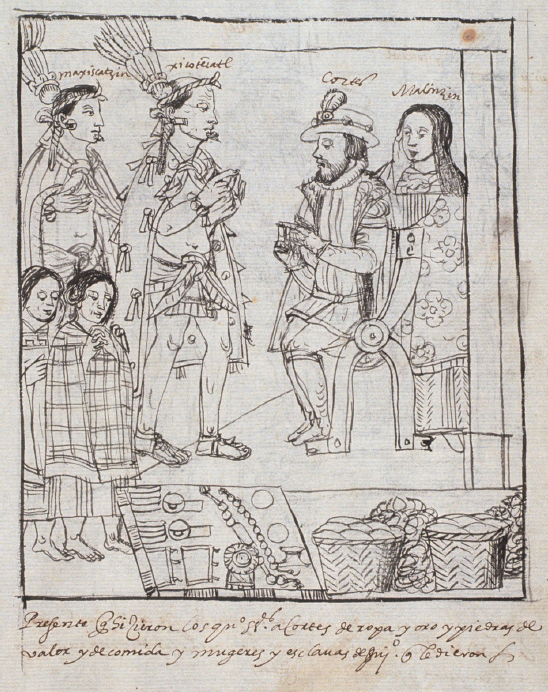Document 16.3
Diego Munoz Camargo, “Moctezuma Meets Cortés,” Sixteenth Century
“Moctezuma Meets Cortés” from Diego Munoz Camargo’s Historia de Tlaxcala echoes the image of this encounter included in the Lienzo de Tlaxcala (see Document 16.1). The basic composition of the two images is the same, with the principal figures in the center and Moctezuma’s gift of women and precious objects arrayed below. Moreover, like the image from the Lienzo de Tlaxcala, Camargo’s illustration shows Cortés sitting and Moctezuma standing, and Malintzin is clearly depicted as an Indian, wearing similar clothes to the slave women in the scene. There are, however, important differences between the two illustrations, perhaps the most striking being the placement of Malintzin behind Cortés in the Historia de Tlaxcala. As you look at the image, think about the similarities and differences between it and Document 16.1. In what ways was it inspired by the Indian image? In what ways did it depart from the Indian model?

Questions to Consider
- What details does the Camargo illustration take from the Lienzo de Tlaxcala image? How would you explain the artist’s decision to include the details that he did?
- What importance should we attach to Malintzin’s placement in the scene? How does moving Malintzin behind Cortés change the way viewers see her relationship to him? How does it change our perception of the relationship between Cortés and Moctezuma?